Above, the south side of the 100 block of East Main St., looking southeast, 1924.
(Courtesy Duke Archives)
The 100 block of East Main St. was, along with 100 West Main St., the earliest retail focus in Durham. Generally, in the development of Durham, early frame structures were supplanted by brick structures, and frame structures were then constructed further to the east and west, later supplanted.. etc., etc. The brick structures in the 100 block of East Main were the 'first generation', built during the 1880s
No one, distinct, business occupied most of these structures. Rather, a parade of dozens of different businesses utilized the space - a quick glance at a Chamber of Commerce publication from 1924 shows the Martha Washington Tea Room (122), Hibberd's Florist (118), and The Durham Shoe Store (124) among the retailers.
Hibberd's and the Singer Sewing Machine Co. were occupants of 118 in 1919, through ~1930. By 1934, O'Briant's Music Store and Pearman's Barber Shop were at 118. In 1940, O'Briant's was still there, with the Cut Rate Men's Store.
The south side of the 100 block of East Main St., looking west-southwest, 1927. The banner on 124 East Main is advertising "McFadden's Flats" at the Paris Theater across the street, which would later become the Uptown Theater.
(Courtesy Durham County Library)
By 1944, a soda shop called "The Orange Shop" and the Durham Novelty Co. were at 118.
(Courtesy Duke Archives)
By 1952, 118 housed OPO men's clothes, which it did through the early 1960s.
Two strange trends befell this block, which I still don't understand completely. First, a strong enough desire to change the front facade that you would remove the entire existing brick facade.
Looking southwest, 1947.
(Courtesy Duke Archives)
And secondly, removal of the upper floors of various buildings. Sometime in the 1950s, 118 East Main lost its Victorian facade.
118-124 E. Main, 1970s
(Courtesy Norman Williams Collection)
Despite The Orange Shop being long-departed, 118 acquired a nice orange facade, which was later covered with a brown facade, and the building was called "The Jones Building."
Above, the view of these buildings today - 120-124 with a 1960s era modern facade. Looking southwest, 2007.
Looking southeast, 2007.
Of late (2011) 118 East Main has reacquainted itself with its Orange Shop history.
09.10.11

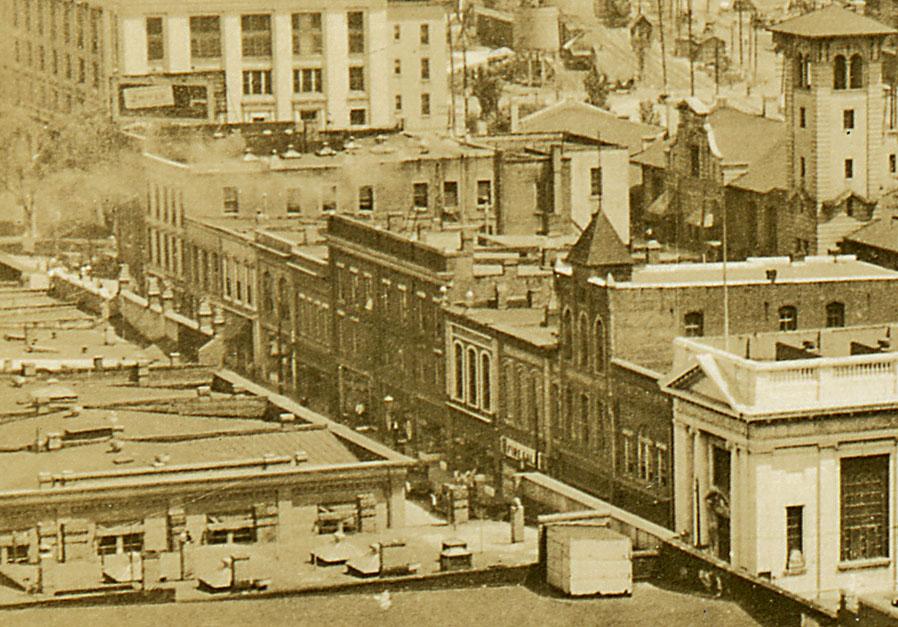
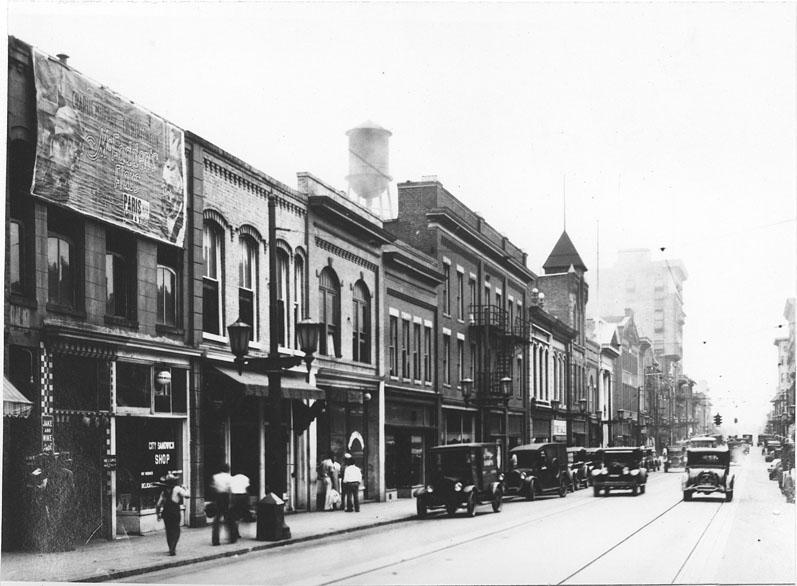
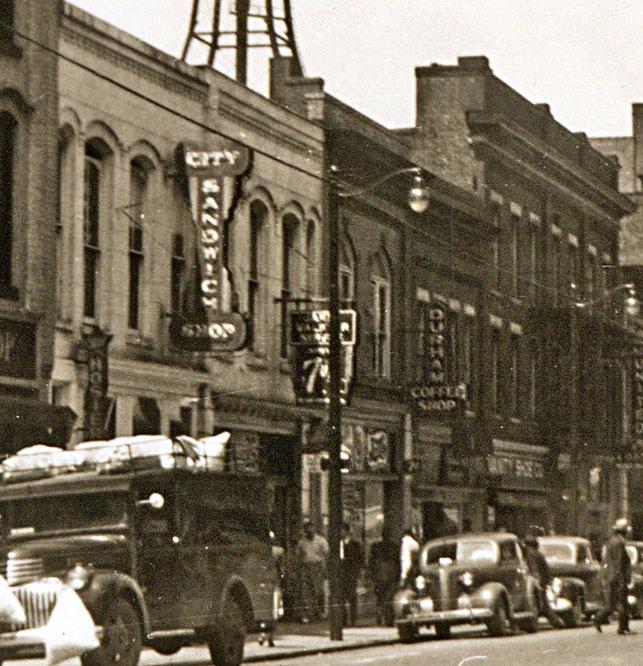
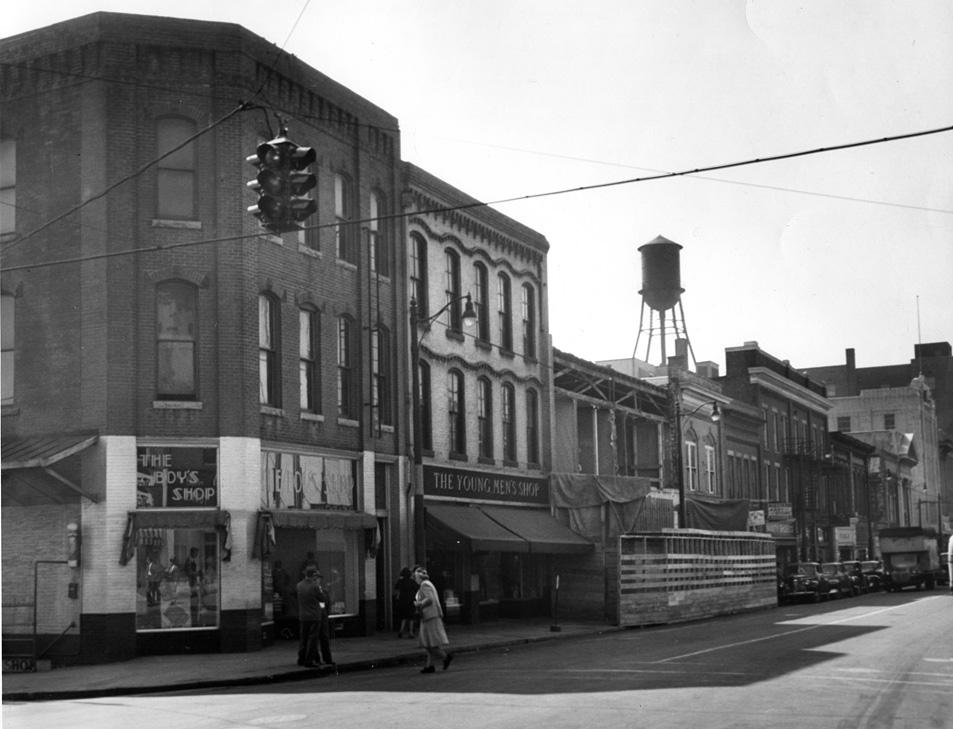
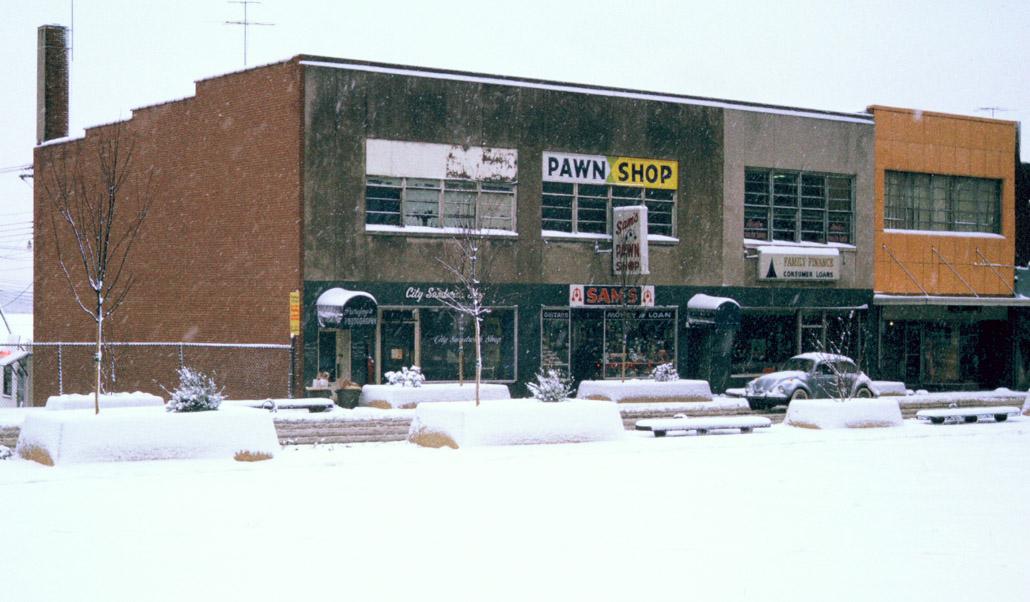
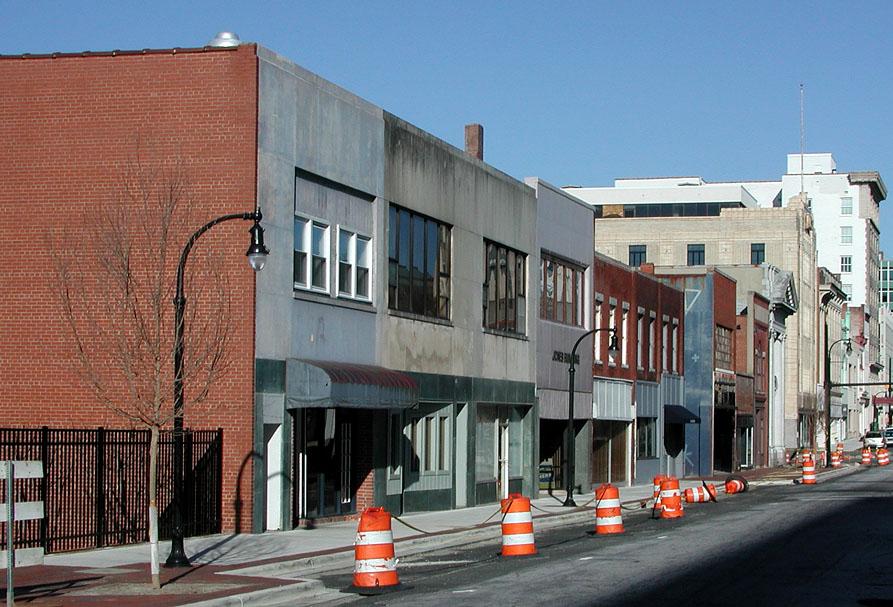
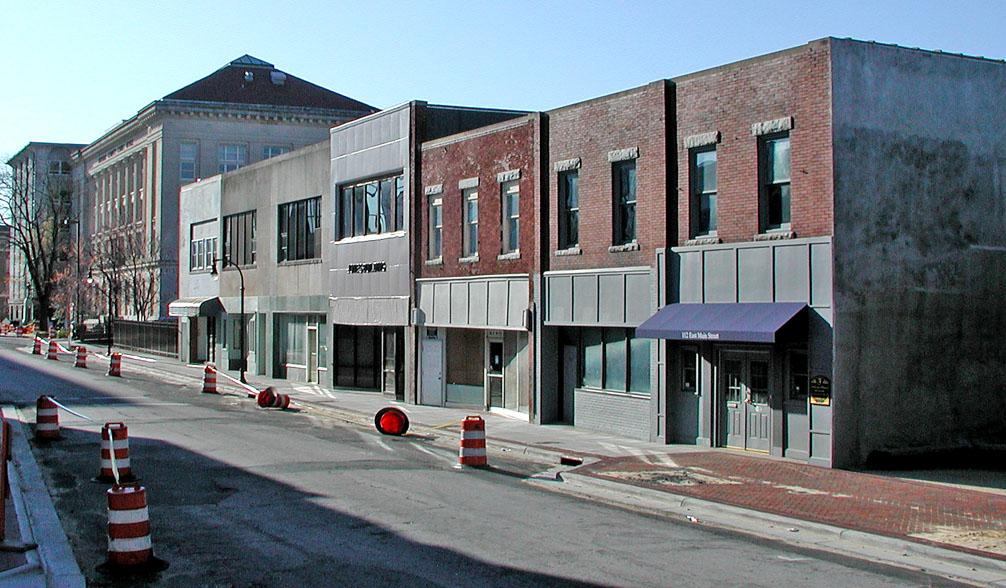
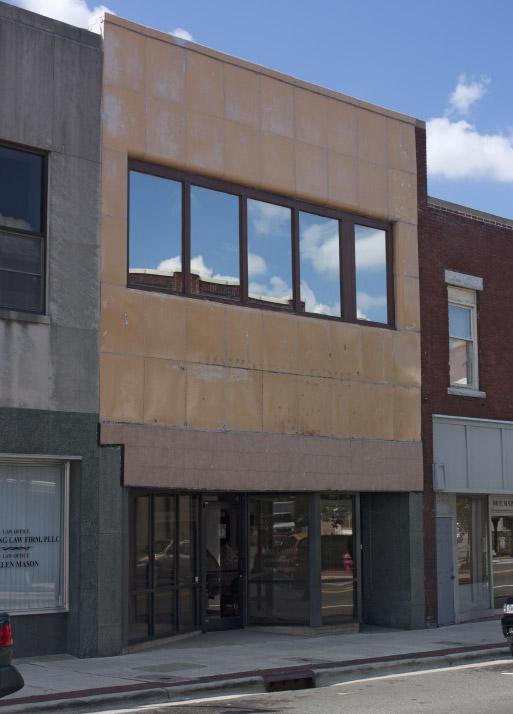
Add new comment
Log in or register to post comments.